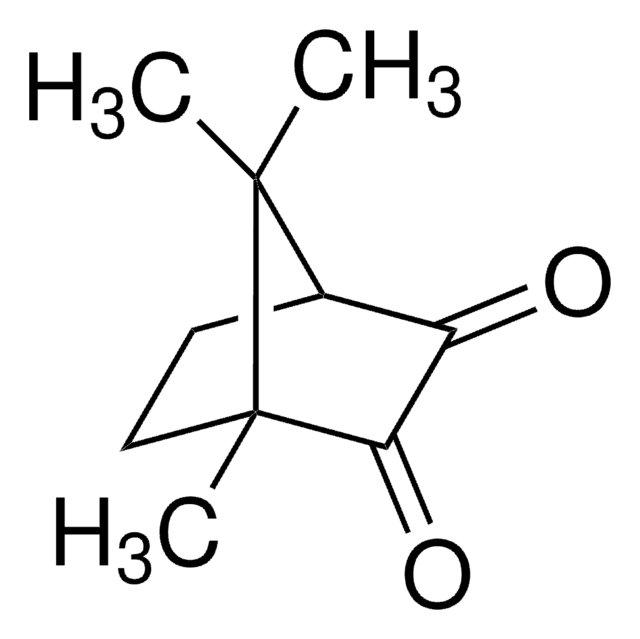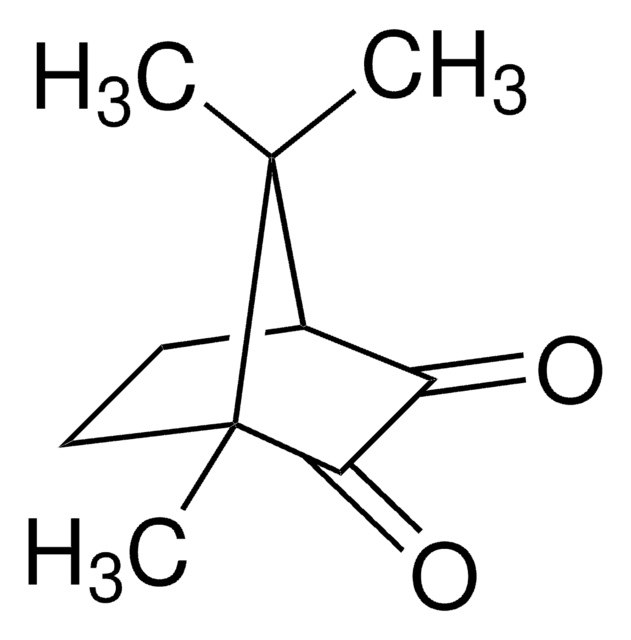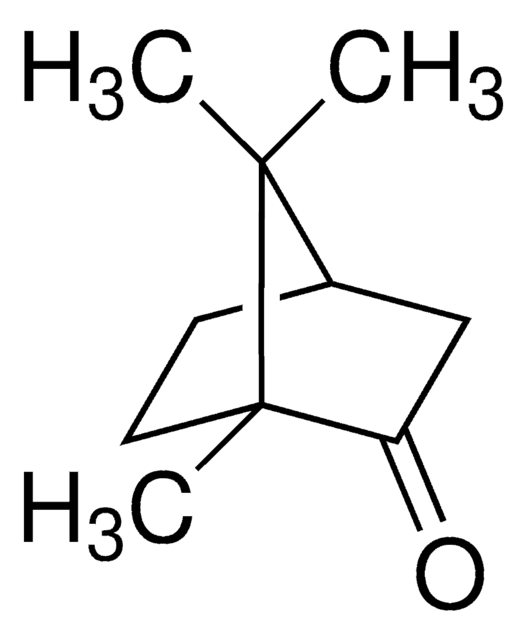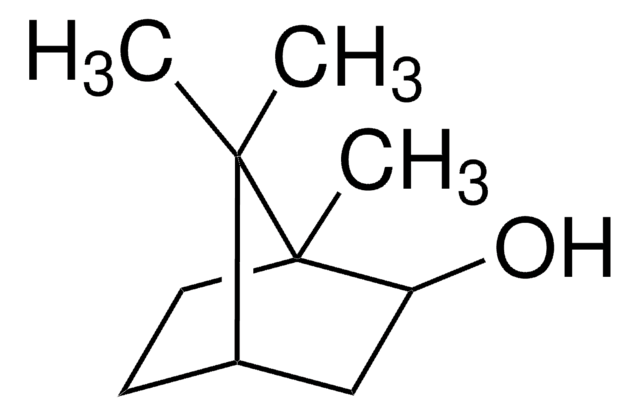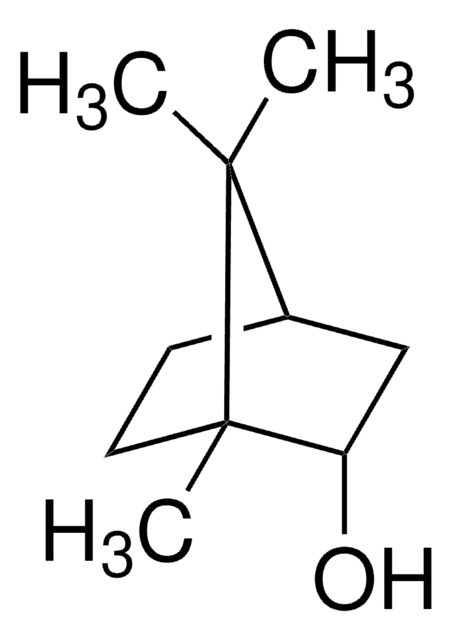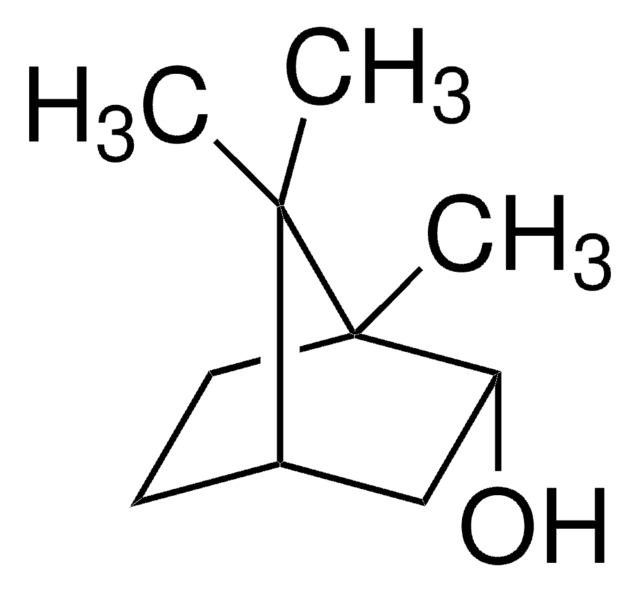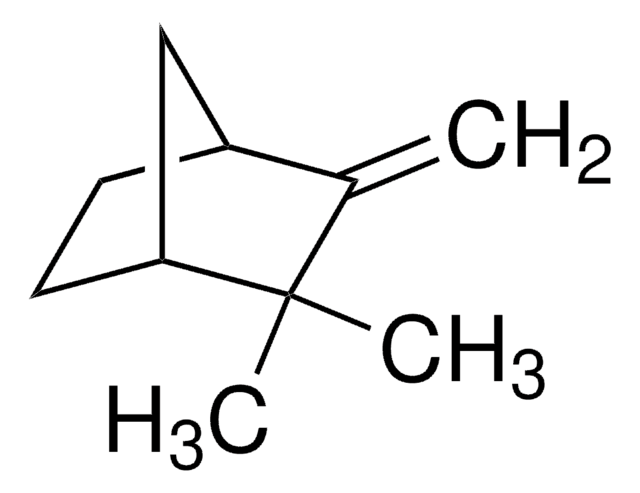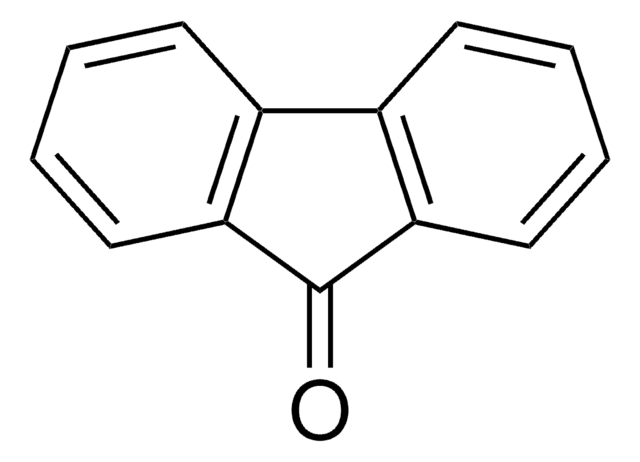272078
(1S)-(+)-Camphorquinone
99%
Sinónimos:
(1S)-(+)-Bornanedione
Iniciar sesiónpara Ver la Fijación de precios por contrato y de la organización
About This Item
Fórmula empírica (notación de Hill):
C10H14O2
Número de CAS:
Peso molecular:
166.22
Beilstein:
2613999
Número CE:
Número MDL:
Código UNSPSC:
12352115
ID de la sustancia en PubChem:
NACRES:
NA.22
Productos recomendados
Nivel de calidad
Ensayo
99%
actividad óptica
[α]20/D +100°, c = 1.9 in toluene
mp
197-201 °C (lit.)
grupo funcional
ketone
cadena SMILES
CC1(C)[C@H]2CC[C@]1(C)C(=O)C2=O
InChI
1S/C10H14O2/c1-9(2)6-4-5-10(9,3)8(12)7(6)11/h6H,4-5H2,1-3H3/t6-,10+/m0/s1
Clave InChI
VNQXSTWCDUXYEZ-QUBYGPBYSA-N
¿Está buscando productos similares? Visita Guía de comparación de productos
Aplicación
Bioreduction of quinones and other ketones by red algae.
Chiral starting material.
Código de clase de almacenamiento
11 - Combustible Solids
Clase de riesgo para el agua (WGK)
WGK 3
Punto de inflamabilidad (°F)
Not applicable
Punto de inflamabilidad (°C)
Not applicable
Equipo de protección personal
Eyeshields, Gloves, type N95 (US)
Elija entre una de las versiones más recientes:
¿Ya tiene este producto?
Encuentre la documentación para los productos que ha comprado recientemente en la Biblioteca de documentos.
Ettore Castiglioni et al.
Applied spectroscopy, 64(12), 1416-1419 (2010-12-15)
Among the various chiroptical spectroscopic techniques available today, circularly polarized luminescence (CPL) plays a minor role and is still used by a limited number of specialists. The cost of the few commercial instruments available and the complexity of homemade apparatuses
Kunio Ikemura et al.
Dental materials journal, 29(5), 481-501 (2010-09-23)
This paper reviews our recent studies on radical photopolymerization initiators, which are used in the design of light-curing dental adhesives and resin composites, by collating information of related studies from original scientific papers, reviews, and patent literature. The photopolymerization reactivities
Jonggu Park et al.
Journal of biomedical materials research. Part A, 93(4), 1245-1251 (2009-10-15)
The selection of an appropriate photoinitiator system is critical for efficient polymerization of dental resins with satisfactory mechanical and physical properties. The purpose of this study was to evaluate the influence of adding an iodonium salt to two-component photoinitiator systems.
F H F Loureiro et al.
Minerva stomatologica, 60(10), 501-508 (2011-11-16)
This study evaluated the temperature change into the pulp chamber during the light curing of composite resin by direct (bovine tooth) and indirect (matrix) methods. Direct method: fifty standardized cavities (2x2x2 mm) were prepared in bovine incisors, which were randomly
Ario Santini et al.
Journal of dentistry, 40(7), 577-584 (2012-04-03)
To determine the degree of conversion (DC) and Knoop microhardness (KHN) of resin-based composites (RBCs) containing trimethylbenzoyl-diphenylphosphine oxide (TPO) cured by polywave or monowave LED light-curing units (LCUs). Three groups (each n = 5) of Tetric EvoCeram (Ivoclar Vivadent), Vit-l-escence
Nuestro equipo de científicos tiene experiencia en todas las áreas de investigación: Ciencias de la vida, Ciencia de los materiales, Síntesis química, Cromatografía, Analítica y muchas otras.
Póngase en contacto con el Servicio técnico